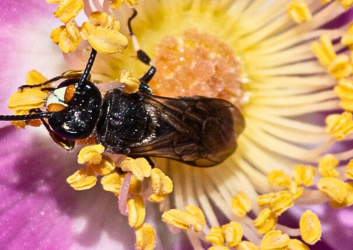Where to see wildflowers — and avoid the crowds
Classic wildflower destinations like Dog Mountain in June or Mount Rainier in July get all the spring/summer love (and overcrowding). But a few WA state parks have lesser-known wildflower explosions every spring.
So, if you want to sing “The Hills Are Alive…” to the birds, rodents and maybe a few disgruntled onlookers AND you don't want to fight for parking or have hordes of people in your photos, here are the trips for you.
Title image: Bear grass from Mount Spokane's Trail #130 in July, 2022. Photo by Laura Brou.

The Columbia River Gorge:
We’d be remiss if we didn’t mention the fields of balsamroot, lupine and red or magenta paintbrush at Columbia Hills State Park. However, it’s popular and crowds can mess with your mojo.
Peak flower week varies but often happens in early April. We suggest picking an off-time to visit – a Tuesday, for instance, in the early morning or late afternoon. If you can only get there on a weekend at 11 a.m. or so, the Crawford Oakes trail will be less crowded than Dalles Mountain Ranch.
A hidden gem in the Gorge, the Klickitat Trail near Lyle, sees balsamroot until late May. It also has gentian, mock orange, bluebells, desert parsley and others into late May and early June. The Swale Canyon section has dramatic blossoms, but it often closes in June for fire season.
Your final Gorge park is Brooks Memorial on the Columbia Plateau. The park’s eastside trails boast lupine, balsamroot, mock orange and tiny, delicate orchids, if you look for them. We ask that people treat these sensitive areas lightly. Orchids are hard to spot and easy to step on.

Central WA:
The interpretive trails at Ginkgo Petrified Forest offer more than just wildflowers. You’ll find pieces of ancient trees, now petrified, and spectacular views of the Columbia River. In April, the golden hills are dotted with balsamroot, wooly pod, milkvetch and phlox.

Eastern WA:
In Southeastern Washington, Fields Spring’s Puffer Butte area is carpeted with lupine, larkspur, parsnip, Nootka and Wood’s rose and Dutchman’s breeches. The display overlooks the Blue Mountains and goes from mid-May through June.
Also in the southeast, the Turnbull National Wildlife Refuge crosses the Columbia Plateau Trail. It’s considered one of the best flower spots in the Inland Northwest. You’ll find bitterroot, sticky geranium, yellow bells, prairie smoke, camas, death camas and balsamroot.
In the northeast, Mount Spokane gets trillium, bunchberry and coralroot throughout the summer. Dainty Calypso orchids pop up in June. When conditions are right, bear grass covers the meadows in July. In August, pink fireweed crosses the beginning of berry season!

North Cascades:
Sauk Mountain is technically state park-adjacent. The steep hike sits up the road from Rockport State Park and becomes a wildflower bonanza by June. Flowering thistles and non-native daisies grow near the parking lot. Penstemon, paintbrush and bluebells start a few hundred feet up; and sawwort and Western meadowrue bloom near the top. Early in season, you’ll see glacier lilies, and later, sometimes into August, you’ll see purple asters and yarrow.

Trip planning tips:
Hiking Rockport and Sauk Mountain takes you from old-growth forest to alpine meadow in a short distance. It’d be worth camping at nearby Rasar State Park and taking the time to see both.
Check wta.org trip reports and call park offices to see when the wildflowers are starting. You can also reference previous years’ trip reports, though every spring is a wee bit different.
When viewing the wildflowers and having your photo taken among them, please stay on designated trails. And keep your pup on leash and close to you. Getting the perfect shot may require creativity, but your Leave No Trace-minded followers will thank you. Trust us, you will radiate even more beauty (and your dog more cuteness) for having protected these delicate ecosystems.
Another Leave No Trace tip for photographers, content creators and ardent suitors: please leave the wildflowers where they are. Many would take years or decades to grow back if they’re picked.
Now go, dust off those winter cobwebs, and bloom!
Originally published March 25, 2024





